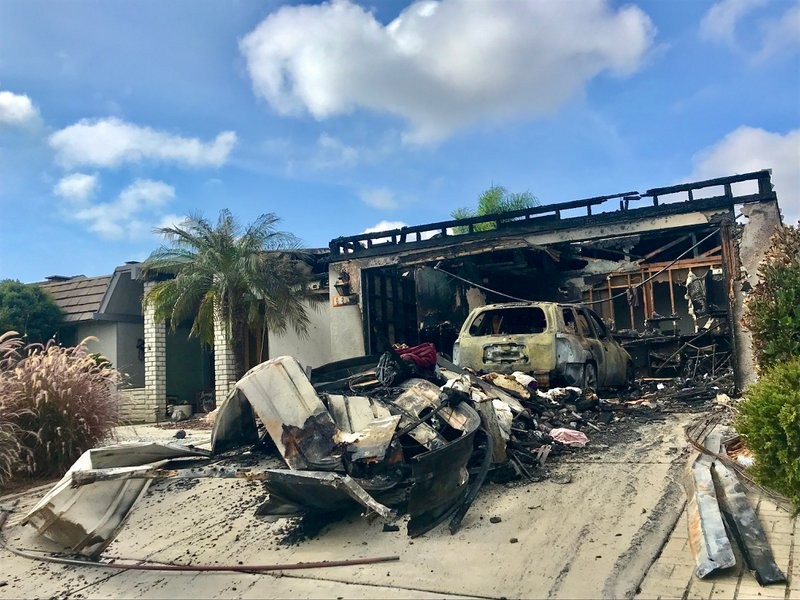.png)
Last week, I flew to Washington, D.C. to join NCARB’s ARE 5.0 item-writing workshop—a room full of experienced architects from across the U.S., working together to draft and refine Architect Registration Examination questions for the licensure exam. To be honest, I felt a bit of imposter syndrome walking in on day one. Most were senior architects, firm leaders, educators. But once the conversation started, it was clear: in this space, it’s not about who you are—it’s about what you bring to the table. I was also the only Asian man in the room, which made the experience feel both humbling and purposeful.
NCARB shared a few data points that set the tone for the stakes of our work: nearly 39,500 candidates are currently pursuing licensure; the average time to get licensed is 12.9 years; roughly 38%of candidates drop out over a decade; there are 116,005 licensed architects in the U.S., with over 150,000 reciprocal licenses across states. Licensure isn’t just a test—it’s a long, grueling journey. Every prompt we write can influence that journey for someone else.
The Architect Registration Examination is the profession’s national, standardized assessment for architectural licensure in the United States. The ARE tests the competencies that matter most in practice: protecting the health, safety, and welfare of the public while delivering projects that are technically sound, coordinated, and constructible. Candidates must demonstrate the ability to think across the lifecycle of a project—from early analysis and programming through construction administration—bridging codes, contracts, technical detailing, sustainability, and professional ethics.
Today, the ARE 5.0 comprises six divisions:
• Practice Management (PcM) – business operations, ethics, and professional responsibilities.
• Project Management (PjM) – contracts, risk, project delivery, and team coordination.
• Programming & Analysis(PA) – site and building analysis, codes, environmental conditions, and feasibility.
• Project Planning &Design (PPD) – concept-level design integration, systems selection, and compliance.
• Project Development &Documentation (PDD) – detailed coordination of assemblies, specifications, and constructability.
• Construction &Evaluation (CE) – bidding, contract administration, field observation, and performance evaluation.
These divisions are designed to reflect real practice. The questions aren’t abstract puzzles; they ask candidates to make decisions the way architects must do every day—balancing code constraints, client goals, budgets, and the realities of construction.

So what does it mean to help write Architect Registration Examination questions? The process is far more structured—and rigorous—than many realize.
1) Anchoring to the blueprint. Every prompt begins with the ARE 5.0 test specification. Item writers align each question to a specific objective (for example, “evaluate code compliance for egress components” or “assess the impact of delivery method on risk”). That alignment ensures each item contributes to balanced coverage across the division.
2) Crafting the stem and options. We prioritize clarity and professional realism. The stem presents a concise, practice-based scenario without enumerating specific project situations. Correct responses are validated against authoritative sources—codes, contracts, and standard references—while distractors reflect plausible misconceptions practitioners may encounter.
3) Bias and clarity review. Before any item moves forward, it undergoes multiple rounds of peer review. We look for ambiguous wording, unintended cultural or regional bias, specialty jargon that adds difficulty without measuring competence, and any “gotcha” phrasing. The goal is not to stump candidates but to measure foundational professional judgment.
4) Citation and source validation. Every technical claim must be supported. We attach citations and verify code clauses and contract language. If the item hinges on a numerical result (say, sizing egress width), we independently replicate the calculation and document the steps.
5) Psychometric and editorial refinement. Items are reviewed by psychometricians and editors for alignment, difficulty, and clarity. Some are pretested(unscored) to gather statistics on performance and discrimination before they count toward a candidate’s result. If an item underperforms—perhaps too many high-ability candidates miss it for the wrong reason—it goes back for revision or removal.
This is meticulous work. In D.C., our group debated whether a detail’s note would cue the answer too obviously, whether a term would be interpreted differently across regions, and whether a novice could reasonably access the needed information within the provided documents. These are the kinds of discussions that protect the integrity of the Architect Registration Examination.
The importance of the ARE 5.0 isn’t just symbolic. It serves the profession, the public, and the candidate—each in concrete ways:
• Public protection. Architects hold legal responsibility for life-safety and building performance. A valid, current examination helps ensure licensed professional scan meet that obligation.
• Professional mobility. Because the Architect Registration Examination is nationally recognized, it supports reciprocity and practice across jurisdictions, enabling talent to move where it’s needed.
• Equity and clarity. A transparent, objective assessment gives emerging architects a clear target. While the journey is demanding, candidates know the competencies the profession expects.
• Practice readiness. By emphasizing documents, coordination, and judgement, ARE 5.0assesses what firms actually need: professionals who can synthesize information, communicate decisions, and manage risk.
Those NCARB statistics we discussed in the workshop were a sober reminder that we must keep improving. When 12.9 years is the average time to licensure and 38% of candidates drop out over a decade, the challenge isn’t to make the exam easier; it’s to make it fairer, clearer, and more practice-aligned—so effort translates into progress, not frustration.
Being the only Asian man in the room was a moment of reflection. It highlighted why participation matters: the more voices we have at the table, the stronger and more inclusive the Architect Registration Examination becomes. Diversity isn’t a box to check—it’s a guardrail against blind spots. Different backgrounds surface different scenarios, project types, and community contexts that the exam should account for.
A note to myself—and to anyone considering getting involved:
• Don’t underestimate your voice in the profession.
• Even a single workshop can spark bigger change.
• If you’re part of an underrepresented group, your presence matters more than you think.

This firsthand involvement strengthens how we practice at BAE Architecture + Design and how we mentor emerging architects. Participating in the development of Architect Registration Examination questions sharpened our internal standards for documentation quality, code reasoning, and constructability. It also deepened our coaching for staff on exam strategy: reading stems carefully, navigating case-study documents efficiently, and linking answers to authoritative sources.
Most of all, it reinforced our commitment to the profession. Contributing to ARE 5.0 is one way we invest in architecture’s future—helping ensure that licensure remains a meaningful benchmark of competence and integrity. We’ll continue to step up where we can item writing, school juries, mentorship, and community advocacy around equitable access to the licensure path.
Writing exam content is humbling. Every prompt we craft carries weight—affecting real candidates on a long, difficult journey toward licensure. But the rigor behind the Architect Registration Examination—alignment to practice, multi-level review, pretesting, and constant refinement—gave me confidence that ARE 5.0 is measuring what truly matters.
I left Washington, D.C. reminded that our profession advances when we build together: practitioners, educators, regulators, and emerging architects. The next time a candidate opens a case study and sifts a drawing set to make a sound decision, I’ll be rooting for them—not just to pick the keyed answer, but to become the kind of architect the public can trust. And I’ll remember that contributing to those questions, however small it may seem, is part of how BAE Architecture + Design shows up for architecture—today and for the next generation.